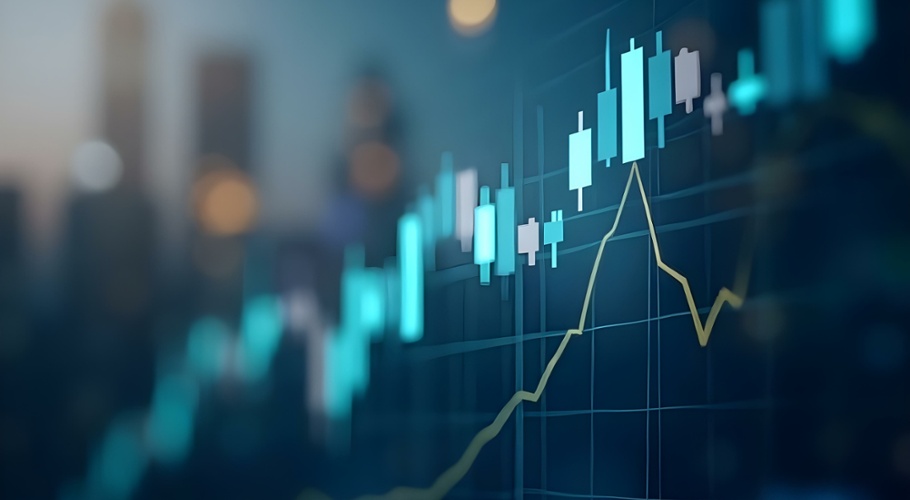Lessons from 1937: Will US stocks rally from here?
Expected to go from strength to strength over the next 12 months, the US economy is tipped to drag markets along for the ride. However, smart investors always have a cautious ear to the ground, particularly in such volatile times. It’s worth asking the question: has the market already priced in a lot of the US economy’s recent gains?
According to Deutsche Bank Director and Head of Depository Receipts for Australia and New Zealand Christopher Bagley, the ongoing heating of the global economy is cause for investors to consider whether 2021 will deliver outcomes just as rare as its predecessor when it comes to the divergent directions of equity markets and the economy.
Appearing as part of a recent AUSIEX webinar on the efficacy of Transferable Custody Receipts (TraCRs), a product that allow Australian investors to gain exposure to US stocks – Bagley pointed out the dry powder which sits ready and waiting to spark a boost in US GDP levels: the untouched savings of American households.
On the back of the Biden Administration’s decision to utilise spending and government policy levers to drive growth, US households have accumulated around USD 1.6 trillion in excess savings since the pandemic hit, which Bagley noted has caused global banks to consider the implications of such an enormous amount of cash suddenly being unleashed.
According to Goldman Sachs, if consumers were to save four-fifths of the additional fiscal support they receive from the end of March until the beginning of Q3, the stimulus would drive incremental spending of USD $200 billion annualised within that window. As a result, GDP levels would jump by 1%, a contribution of two percentage points of annualised GDP growth during the first half of the year.
“We [Deutsche Bank] see global growth rising to nearly 7% this year, and that will be led by China, India and the US because the US’s central bank policy will remain so highly accommodative,” Bagley said.
While an economic boom is clear, Bagley questioned whether the stock market can rally after 2020’s unprecedented returns. While some investment banks view equity markets open to further gains – despite sitting at all-time highs – Bagley noted that many investors are concerned about the risk of inflation and rising bond yields as a pre-cursor for monetary policy to tighten.
“It’s one thing to be bullish on the economy, but what about the market?” Bagley asked.
“It’s clear that equity and credit markets are currently high. Some describe them as running hot but stop short of calling it a bubble, and I think the reason for that is the prospect of robust earnings growth. That is expected to absorb the overvaluations without major market corrections.”
“The question that many are asking is: Can the stock market rally with an economic boom, after last year’s unprecedented returns?”
Bagley said that while inflation can be harmful to the stock market, it is hard to imagine investors selling out of their equity positions in the midst of an economic boom.
Demand driven inflation – similar to what Australia experienced during the Global Financial Crisis (GFC) – is predicted by Morgan Stanley to exceed the Federal Reserve System’s target of 2% by just 0.6%, Bagley noted.
“This goes to my point about the Federal Reserve willing to let the economy run a little hot, and that’s why Morgan Stanley is recommending to add risk, and is actually very bullish on equities and expects markets to track higher,” he said.
Turning to US equity markets’ historical behaviour during times of such significant economic growth, Bagley pointed out that while it is rare for markets to tank when the economy improves, it has happened before (Fig 1.).
“There is absolutely a relationship between Gross domestic product (GDP) growth and the market over time, especially when growth is high. It’s not perfect, but there is a relationship,” Bagley said.

Fig 1.
Bagley pointed out that as real GDP growth has risen in the past, average annual stock market returns have tended to grow.
The one outlier? 1937. That year real GDP growth was over 5%, yet the S&P 500 finished the year down more than 35% as the economy began to slow into a recession. Just four years later, the S&P 500 finished the year down 11% on the back of the impact of WWII, despite GDP growing double digits year over year.
“Otherwise, stocks have generally seen strong returns when economic growth was high. Seven out of the 11 years when GDP growth was 8% or higher, the stock market was up double digits,” Bagley said.
“It is relatively rare for the stock market rallying concurrently when the economy is booming.”
However, Bagley said that while such a circumstance was not common, he pointed out that neither is it common for the stock market to boom during a deep recession, as occurred in 2020.
“It is a risk worth considering,” he said.
“I’m kind of a glass-half-full type of person. Betting against the stock market against this economic backdrop of what will be and could be the strongest economic environment since the mid-late 90s seems like an even riskier proposition.
“It’s one thing to be bullish on the economy, I think most are. It’s another thing to be bullish on the market at the same time.”

